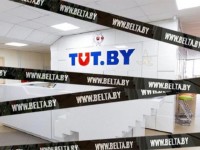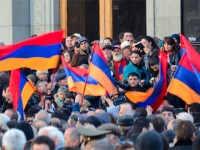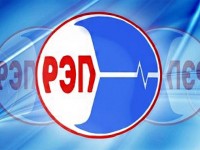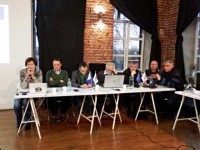The Belarusan National Platform of the EaP CSF issued a statement in connection with the wave of searches in the editorial offices of the Belarusan media and the detention of journalists.
Heritage is a space of fighting over what we bring to the future (Photo)

In early February, Nesvizh Castle hosted an international team of experts in the field of conservation and revitalization of cultural heritage.
It is in Nesvizh that the second seminar in the framework of the international project “CHOICE — Cultural Heritage: Opportunity for Civic Engagement” took place. How one should understand the difference between “legacy” and “heritage” and what professional work stands behind this difference? — we share the main content of the meeting.
“Public understanding of historical and cultural heritage: value dilemmas and practical approaches” was the theme of the seminar, which also reflected the work structure. After the opening day dedicated to exploring the castle that belonged to the Radziwiłł family, and now is one of the key illustrations of Belarus as “the country of castles”, the debates unfolded in two main thematic blocks: 1) value content of heritage sites and 2) practice of their appropriation by the various social groups. Each of the gathered representatives of the participating countries — Armenia, Belarus, Moldova and Ukraine — had the great experience in the sector of historical and cultural heritage. That’s why “lecture” format didn’t work out, though the debates were unfolding in full swing.

Legacy and heritage. Is there a difference?
Igor Rakhanskiy, the head of the project bureau of Belarusan committee ICOMOS, presented his basic interpretation of key concepts: “Heritage” is a “raw” legacy: objects, traditions, norms, and habits that are inherited by every new generation from the previous one only by the fact of their presence, without a qualitative assessment of their content. Legacy is a professional term that means that some particular construction, creative product or manifestation of people's lifestyle and thinking is elevated to the rank of a value.”
By the way, the designer Michal Aniempadystau’s understanding of this division of concepts is exactly the opposite: legacy is something that people get by default, by birth, and by residence in the territory, whereas heritage is the legacy that is evaluated by the society. However, in both these cases it is important to distinguish between the examples of people’s material and immaterial culture that were unconsciously inherited and those that were consciously given some value.
The head of the project bureau of Belarusan committee ICOMOS has repeatedly emphasized the often undervalued socio-cultural rather than material content of legacy. Belarus should at least balance the “collective” approach in the work of museums, galleries, and other institutions with the conceptualism of the exhibited object.

The legacy as the fighting space
Speaking about how the professional roles of experts from the approaches of working with legacy, the coordinator of the Flying University Tatiana Vadalazhskaya presented several points, which were quickly “picked up” in the general discussion.
First, the legacy is a workspace, which is dual in its directions: the past and the future. Work with legacy involves a kind of a “meeting point” where these two time measurements meet each other. Thus, legacy often becomes a fighting space for the values that will be transferred from the past into the future.
The second point is that today, according to Tatiana Vadalazhskaya’s observations, representatives of technology and mass production has the biggest chance to succeed in this fight.

The difficulties of a substantive discussion
As for the fight among the participants of the seminar for the legacy as a value in itself, all the discussions had an absolute unanimous “hunger” for new approaches that the participants could borrow from each other. Unfortunately, the hunger wasn’t satisfied. Thus, Anton Astapovich, the head of the Belarusan Voluntary Society for Protection of Monuments of History and Culture, noted that “the communication with colleagues from Ukraine, Moldova, Armenia, and Belarus have once again demonstrated the fundamental unity of the principles of value in protecting legacy.”

Players of one field?
As noted by Alina Derevyanko, the coordinator of the international program “Culture and creativity”, despite the different cultural situations in the Eastern Partnership countries, there are a lot of common conditions that form a single context for cultural policy: “We keep looking for something in common that would improve the situation in our countries. When the countries of our region will be able to develop a common development strategy and agenda of topical issues related to the historical and cultural heritage and culture in general, then the region will be more integrated, and its voice will be heard in other international arenas.”
Philosopher and methodologist Uladzimir Matskevich, who was the main expert and agent provocateur of the meeting, in the course of the seminar in Nesvizh Castle made two general conclusions. The first sounded as a question, inspired by no less than a philosopher of Minsk underground of the last century Kim Khadeev: “We talk a lot and on the right topics, but do we hear each other?”
Some time after the seminar Matskevich gave an affirmative answer to his own question: “People do not always inherit only something “good”. Legacy can often be burdensome. Thus, the humanitarian language, which describes social aspects and phenomena, the language that we inherited from the Soviet era, is poisoned: it is poorly adapted to the understanding and formulating of many problems in the religious, cultural, social, humanitarian, and psychological practices. Therefore, we sometimes find it very difficult to agree in the above mentioned spheres.
It is important that the meeting in Nesvizh gathered people from the 4 post-Soviet countries that have received Soviet education; people, who were trying to find adequate and general concepts in their work with values. However, we are only at the beginning of our way.”
* * *
The organizers of the meeting expressed gratitude to the leaders of the National History and Culture Museum-Reserve “Niasvizh” in the person of Siarhei Klimau, as well as the to the partners of the International Consortium “EuroBelarus” — the Center for Social Innovation, and the Centre for European Transformation — for the organizational support of the event.
About project
“CHOICE — Cultural Heritage: Opportunity for Civic Engagement” is a two-year international project that is unfolding in four countries of the Eastern Partnership region — Ukraine, Moldova, Belarus, and Armenia. The project aims at supporting the organizations, initiative groups, and experts in rethinking the national cultural legacy. The next step of the project will be common coordination work over several projects in each of the countries-participants. Stay tuned for updates on the site EuroBelarus.Info!
Others
-
Statement of the Belarusan EaP CSF National Platform on solidarity with the civil society of Armenia
The Belarusan National Platform of the Eastern Partnership Civil Society Forum issued a statement on solidarity with the civil society of Armenia.
-
Statement of the BNP in connection with the criminal prosecution of the leaders of the Belarusan independent trade unions
The Belarusan National Platform of the Eastern Partnership Civil Society Forum issued a statement in connection with the criminal prosecution of the leaders of the Belarusan independent trade unions.
-
Final event of project CHOICE — Paving the way to European Year of Cultural Heritage 2018
The final event of the two-year EU funded project CHOICE — Cultural Heritage: Opportunity for Improving Civic Engagement was held on June 6, 2017 at the Committee of the Regions, in Brussels.
-
Heritage is a verb. The results of the CHOICE project were summarized in Minsk (Photos and video)
Does Belarus need a “Public Ministry of Culture” and “Ašmiany Charter” to deal with the historical and cultural sites?








Comments
From farewell to a new Eastern policy and towards a new development
Poland and Germany were both initiators and drivers of a New Eastern policy linked to the Eastern neighborhood and Russia/Soviet Union.